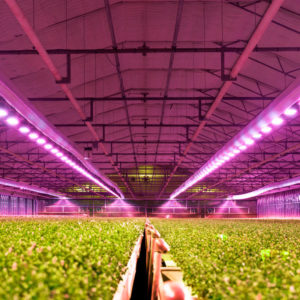Main Types of Beehive Structures
Bees naturally create their own hives and combs, but kept bees need some structure. The main types of beehive structures do change somewhat over time. However, there are three main kinds of beehive you can rely on to stay (more or less) the same. The three main types are Langstroth, Warre, and Top-bar. In this guide, we’ll go over the main points you need to know about each.
Vertical Vs. Horizontal
Whether you consider a hive vertical or horizontal does depend on the dimensions. However, it’s really more about how you expand the hive. In vertical hives, beekeepers add boxes to the existing structure whenever their bees need more space.
In horizontal beehives, the height always stays the same, and the hive expands in length. Often this means a divider is placed between the ‘active’ combs and empty space in the cavity (container for the hive). If the colony expands and requires more space, beekeepers move the divider back to create an open area.
Vertical Beehives
Of the three most common, modern types of hives, most are vertical. Both Warre and Langstroth are vertical designs, and there are plenty of reasons they’re favorites among beekeepers worldwide. These hives typically consist of boxes filled with frames, stacked upon each other. This modular design allows easy expansion, and virtually unlimited growth for the hive.
Langstroth
Langstroth hives are undoubtedly the most commonly used worldwide, whether by commercial beekeepers or backyard beginners. This design is named after the creator, Reverend Lorenzo Langstroth, who filed the patent for it in 1852. However, the structures really came into being, and into use, in the 1920s.
Even in modern times the Langstroth hive is one of the most widely implemented throughout the world for amateurs and professionals alike.
The main way to identify a Langstroth hive is by the frames that hang vertically from the hive boxes. Each box (or ‘honey super’) contains either eight or ten frames that hang parallel to one another. Another reason this design is more notable is that it gives the colony some bee space. That means that there’s enough room between frames to prevent bees from sticking frames together, along with other pieces of the hive.
These hives have a more modular design. Essentially, that means that the boxes are uniform in shape and size, and can be moved around or rearranged as needed. The box at the bottom is reserved for the queen to lay eggs in, while other boxes and frames are designated for honey storage and brood rearing.
The moveable frames allow beekeepers to work with their bees and manage their hives in ways the previous designs didn’t allow.
Each hive body or honey super has either ten or eight frames inside. These frames often have a base or foundation made of wire, or plastic, with some base wax. On occasion, beekeepers also add a queen excluder to the setup.
Langstroth hives also feature two different covers: a telescoping (and/or migratory cover) and an inner cover. Both of the covers help protect the hive and reduce pressure on the bees in harsh weather. In a Langstroth hive, beekeepers can also add an entrance reducer to the bottom board, which helps the hive keep intruders out.
Advantages:
- Uses bee space to avoid frames sticking together
- Covers protect hive structure and help maintain temperature
- Easier to inspect or move entire frames at once
- Less risk of breaking combs
- Higher honey production compared to other hive styles
- Virtually unlimited size, just add more boxes to expand
- Many resources for new beekeepers
- Bees don’t need to rebuild combs after honey harvest
Disadvantages:
- Frames can be extremely heavy, making inspection and removal more difficult
- Very specific dimensions make it difficult to construct your own
- More invasive to work with, can stress bees
- Bees can be crushed when moving boxes and frames
Warré
Warré hives are another type of vertical hive, and have a similar design to Langstroth hives. Invented by Emile Warré, these hives allow bees to build their combs much as they would in nature: from the top down. While Langstroth hives use frames to hold the combs, Warré hives use top bars. They’re more like a meeting of the Langstroth and Top Bar hive styles.
While it does have a stacked design, it isn’t expanded the same way that other hives with similar structures are. As the hive continues expanding, beekeepers place new boxes on the bottom, rather than on the top. This is also called nadiring. It serves a specific purpose, and actually helps keep the brood nest warm and healthy.
Like Langstroth hives, Warré hives also have an entrance at the bottom of the hive. However, the entrance is smaller, which may make it impossible to add an entrance reducer. Warré hives also keep bees closer to their natural environment, since they more closely resemble a tree trunk.
Advantages:
- Uses more natural design for bees to make combs
- Combines Langstroth and top bar elements
- Design keeps brood nest warmer
- Entrance reducers may not be needed
- Easy to add extra boxes as the hive expands
Disadvantages:
- Heavier lifting required
- Minimum monthly inspections suggested
- May not allow entrance reducers
- New boxes have to be placed underneath others
Horizontal Hives
Top bar
Horizontal hives are longer than they are tall, and don’t use frames like many vertical hives do. While they aren’t the most common worldwide, they’re quickly gaining popularity. However, top bar hives are commonly considered the oldest style of hive in the world, and have likely been used for millenia. Top bar hives don’t cost a lot to construct from scratch, and can be managed with organic, natural practices. The only real specification for these hives is the width of the top bars, which need to be between 1 ¼ to 1 ⅜ inches (32 to 35 mm).
Top bar hives are typically shaped like a trapezoid with a ‘top bar’ that runs along the top inside of the hive cavity. Then, much like in Warré hives, the bees form their combs from the top down, without the need for frames. Inside, beekeepers put a divider board, which allows them to manage the hive, and helps the bees regulate the temperature within the hive. As the colony grows, the beekeepers simply move the divider board back to create more space. Then they add additional top bars as needed to help the bees create new combs.
These top bars are moveable, which in turn means that beekeepers can move the combs for inspection and harvest. When it comes to harvesting the honey, beekeepers typically crush the entire comb, and strain the honey from the wax. This means that not only does the hive yield honey, but it also yields beeswax.
While the main hive body can’t be expanded, it also requires significantly less material and resources to construct and manage. A limited hive body can mean less honey overall, but most beekeepers consider it an even trade, since they also get beeswax.
Top bar style hives are ideal for people that can’t manage heavy lifting, because there are no heavy frames. The bars and combs weigh only a few pounds. This style of hive also makes bees easier to manage, and they stay calmer when beekeepers work with the hive.
Advantages:
- Easy to construct from scratch
- Lightweight, no heavy frames to lift
- Can be kept with organic, natural practices
- Yields both beeswax and honey
- Uses bee space
- Divider board helps bees regulate temperature in winter
- Bees overwinter better than in other hive styles
- Bees stay calmer during inspections and harvest
- Less invasive than other management styles
Disadvantages:
- Combs are delicate and may break when removing
- Broken combs can make a large mess in the hive
- Can only expand as far as the hive cavity (can’t add ‘boxes’ to expand)
- Difficult to move, designed to be stationary
Kenyan vs. Tanzanian
Some of the most common styles of top bar hives are Kenyan and Tanzanian hives. Today, the term Kenyan hive is used more often. However, there are differences between the two that do make a difference to beekeepers
The more modern style of Tanzanian hive came into being around the 1960s, while the Kenyan hive was developed in the 1970s. Prior to this, Tanzanian beekeepers often used log hives, where each end was covered, and the combs were harvested from the middle. While this did allow beekeepers to harvest their honey, it also destroyed the brood combs in the process.
Because the brood combs were destroyed with every harvest, the government soon started promoting other styles of hives. Namely, a plank style hive more similar to top bar hives in use today. However, with the plank hive, bees create their combs on the inside roof of the hive, rather than on bars. The other style is more similar to the original log hives, with the exception of openings for harvest on either end, rather than in the middle.
These days, Tanzanian and Kenyan hives are very similar in form and construction. In fact, they’re nearly identical with one major exception: the sides. In a typical Kenyan top bar hive (KTBH), the sides of the hive cavity slope. Modern Tanzanian hives have the same shape, although their sides are straight, rather than sloped.
These small differences don’t impact the other ways the hives work, however. They still function the same as any other typical top bar hive. Top bars run along the interior ‘roof’ of the hive body, and bees still build their combs from the top down.
Frequently Asked Questions
How much bee space do I need?
Bee space allows bees to move between combs, but it should be small enough that they aren’t tempted to glue combs, frames, and other pieces of the hive together. Bee space should be no larger than ⅜” (9 mm). If the gap exceeds ⅜”, bees start gluing the frames together. However, bees also need at least ¼” (6 mm) to move around. Bee space should be between ¼” and ⅜” (6 to 9 mm). Ideally, most beekeepers prefer to give their bees around 5/16”, which falls right between the two ends of acceptable bee space.
What is the best beehive for beginners?
Any of the three major types of beehive are good choices for beginners. However, which is best for you depends on a few factors. If you can lift heavy frames and boxes, Langstroth hives are a great choice. They’re also very common, which means there are plenty of resources available to beginners. However, they do have a very specific construction, which can increase startup costs. Top bar (AKA Kenyan) hives are another good choice for beginners. If you’re fairly handy, you can construct your own at very little cost. They’re also a good choice for people that want to avoid heavy lifting, have calmer bees, and don’t want a huge, expanding hive.

